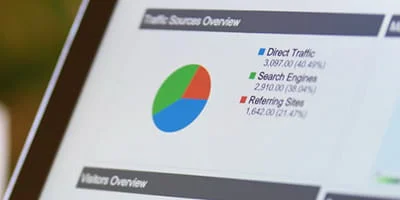Keep up to date with our knowledge hub


9 January 2026
Munster SMEs are entering 2026 with clear ambition and strong intent to invest
New research from Bibby Financial Services finds 83% of Munster SMEs remain optimistic for 2026 despite cost challenges and tighter conditions
Read more
Updated: 12 December 2025
Leinster’s business community is ready to grow, they just need the financial runway to make it happen
New research from Bibby Financial Services finds that over one third of SMEs lack the cashflow to scale or invest, while those with cashflow are three times more likely to expect growth
Read more
Updated: 13 November 2025
SME Confidence Tracker Q4 2025: Adapting for Growth
Despite persistent cost pressures and global uncertainty, Ireland’s SMEs are showing remarkable resilience and adaptability. The latest SME Confidence Tracker reveals how business leaders are navigating inflation, policy change, and new opportunities, offering fresh insights for 2026 and beyond.
Read more
Updated: 12 November 2025
62% of Irish SMEs say Budget 2026 fails to tackle rising costs
New research from Bibby Financial Services finds 82% of SMEs remain optimistic for 2026 despite cost challenges and tighter conditions
Read more
Updated: 11 November 2025
SME Confidence Tracker Q4 2025: Adapting for Growth
Despite persistent cost pressures and global uncertainty, Ireland’s SMEs are showing remarkable resilience and adaptability. The latest SME Confidence Tracker reveals how business leaders are navigating inflation, policy change, and new opportunities, offering fresh insights for 2026 and beyond.
Read more
2 October 2025
Irish Times Corporate Finance Report in collaboration with BFS
The Irish Times Corporate Finance Report 2025 brings together insights from leading financial providers, including Bibby Financial Services, to examine how companies are managing capital, structuring acquisitions, and funding long-term projects.
Read more
18 September 2025
New €30m SBCI-backed finance fund for Irish SMEs announced
The new fund brings the SBCI’s lending partnership with Bibby Financial Services to €100 million
Read more
28 July 2025
Tariffs, Tight Credit, and Ticking Clocks: SMEs need all the support
With finance harder to secure and international trade more uncertain, Irish businesses need quicker decisions, clearer support, and a real plan to weather what’s coming
Read more
Updated: 4 July 2025
Despite unpaid invoices and an average bad debt of €25,292, Irish SMEs remain committed to investment
Almost four in ten Irish SMEs had to write off bad debt in the last 12 months
Read more
2 July 2025
BFS Awarded Financial Services Company of the Year 2025
Bibby Financial Services Ireland has been recognised as Financial Services Company of the Year 2025 by InBusiness Recognition Awards
Read more
Updated: 9 June 2025
Leinster Businesses show strong confidence, ready to invest an average of €199,000 this year
Business confidence among SMEs in Leinster remains strong with 86% feeling optimistic about their prospects for 2025 despite rising business costs and geopolitical volatility.
Read more
Updated: 9 June 2025
Connaught SMEs demonstrate highest capital deployment plans for 2025
90% of SMEs in Connaught say they are confident for the year ahead, with 92% planning to invest in the coming months.
Read more
Updated: 9 June 2025
Munster SMEs lead AI Adoption with high optimism towards future-focused Investment plan
Business confidence among SMEs in Munster remains strong with 90% feeling optimistic about their prospects for 2025 despite rising business costs and geopolitical volatility.
Read more
Updated: 30 May 2025
Resilience in the Face of Rising Costs: Cashflow Tips for SMEs
Business leaders are actively seeking robust strategies to not just manage the business costs, but focus on growth.
Read more
Updated: 23 April 2025
One third (34%) of Irish businesses plan to explore a merger or acquisition transaction this year
One third (34%) of Irish businesses plan to explore a merger or acquisition transaction this year, with a further 14% considering the full sale of their business to an outside entity
Read more
Updated: 9 April 2025
Business sentiment is up with 88% of Irish SME’s saying they are confident for the year ahead
Business sentiment is up with 88% of Irish SME’s saying they are confident for the year ahead, and 92% saying they plan to invest in the coming months – new research from Bibby Financial Services.
Read more
Updated: 27 February 2025
Expanding Internationally
Find out how our business financing and funding solutions can help your business trade internationally.
Read more
Updated: 11 February 2025
Funding Business Mergers & Acquisitions
What options are available to businesses when looking to fund a merger or acquisition? We look at the advantages and disadvantage of these options
Read more
Updated: 11 February 2025
Funding Working Capital for Cash Flow Management
What is working capital and what are the funding options available to businesses to increase working capital to enable better cash flow management
Read more
Updated: 11 February 2025
Managing Debt when Funding Business Growth or Expansion
Businesses often look at taking on more debt for growth or expansion, but we explore an alternative way of funding growth without the burden of further debt
Read more
Updated: 5 February 2025
Bibby Financial Services shortlisted for Guaranteed Irish Business Awards 2025
BFS is delighted to be shortlisted in the Professional Services category, sponsored by FBD Insurance, for the highly anticipated Guaranteed Irish Business Awards 2025.
Read more
Updated: 15 January 2025
Irish SMEs writing off 'bad debt' last year, wrote off over €34,000 on average
Irish SMEs writing off 'bad debt' last year, wrote off over €34,000 on average
Read more
Quarter 1, 2025 / 1 January 2025
SMEs are resilient, ambitious, and ready for growth in a changing landscape
Irish business leaders express positive optimism for growth, despite the economic backdrop and challenging high-cost environment.
Read more
Updated: 3 December 2024
The three priorities facing the incoming Government
The three priorities facing the incoming Government if it’s serious about safeguarding the future of Irish SMEs
Read more
Updated: 15 November 2024
Leinster business leaders call for unbiased and informed financial guidance
89% of SMEs in Leinster say the Government needs a full review of the supports they offer businesses to ensure they are fit for purpose - new research from BFS Ireland
Read more
Updated: 11 November 2024
Bibby Financial Services shortlisted for Guaranteed Irish Business Awards 2025
89% of SMEs in Munster say the Government needs a full review of the supports they offer businesses to ensure they are fit for purpose
Read more
Updated: 17 October 2024
What can specialist financial lenders do differently to deliver exceptional customer services?
How combining technology with a personal, human touch can enhance your customer service and, in return, deliver real business success.
Read more
Updated: 26 September 2024
90% of SMEs say the Government need a full review of the supports they offer businesses
90% of SMEs say that the Government need to implement a full review of the supports they offer businesses to ensure they are fit for purpose,
Read more
Updated: 23 August 2024
Bibby Financial Services: Proudly Irish, Honoured with Guaranteed Irish Symbol
BFS has been awarded the coveted Guaranteed Irish symbol. The move is a strong recognition of the 18+ year track record of BFS in Ireland.
Read more
Quarter 3, 2024 / 1 July 2024
SME Confidence Tracker Report 2024
The SME Confidence Tracker 2024 survey provides insights into the challenges and opportunities faced by Ireland's SMEs.
Read more
Updated: 25 June 2024
Ireland now a hotspot for M&A - particularly in the food and beverage sector – but what’s driving this growth activity?
Ireland is increasing becoming a hotspot for mergers and acquisitions, particularly in the food and beverage sector.
Read more
Updated: 31 May 2024
How does invoice factoring help your business manage its cashflow?
Factoring is a quick way to release cash tied up in your customers’ outstanding invoices allowing you to access your funds earlier.
Read more
Updated: 8 May 2024
Why use Invoice Finance?
With invoice finance becoming more popular as a business finance solution we explore the benefits it gives to businesses that use it
Read more
Updated: 1 May 2024
The Increasing and Hidden Costs of Doing Business in Ireland in 2024 and Beyond
Read our blog on the increasing and hidden costs of doing business in Ireland in 2024 and how it could affect your business.
Read more
Updated: 30 April 2024
Is Invoice Discounting Right for my business?
Which type of businesses can use invoice discounting to leverage the value of their sales ledger to improve their cash flow
Read more
Updated: 27 March 2024
Do you qualify for Invoice Finance?
What criteria and eligibility requirements does your business need to meet before they can apply for an invoice finance facility
Read more
Updated: 20 March 2024
BFS appoints Diarmuid Lynch as Client Relationship Manager for Munster region
BFS, Ireland’s leading independent provider of financial funding solutions to Irish SMEs, has appointed Diarmuid Lynch as Client Relationship Manager in the Munster region.
Read more
Updated: 14 March 2024
As the Debt Warehousing deadline of 1st May approaches, here are three crucial steps to improve your company’s cashflow
As nearly 60,000 SMEs prepare to repay warehoused tax debt to Revenue this year – here are 3 practical steps Irish SMEs can take now to maximise their cashflow.
Read more
Updated: 21 February 2024
Time is the enemy for SME’s in 2024 – businesses need to get on top of their bills, not defer them
A wide range of rising costs and an uncertain domestic and international political landscape mean that 2024 is set to be yet another challenging year for SMEs.
Read more
Updated: 5 February 2024
What is an Invoice Finance Company?
An Invoice Finance company is a financial institution that specialises in providing money to businesses by leveraging the value of outstanding invoices.
Read more
Updated: 31 January 2024
Managing your cash flow
Bibby Financial Services are the cash flow experts, our range of products help UK businesses sustain their cash flow when they need it most.
Read more
Updated: 15 January 2024
What is Bad Debt Protection for Invoice Finance?
Bad Debt Protection can safeguard your cashflow, mitigate the impact of customer non payment and insolvency, and support your business growth.
Read more
Updated: 21 December 2023
Rising Costs and Bad Debts: Challenges and Opportunities for Irish Businesses in 2024
Despite considerable uncertainty around the global economic environment, Irish businesses remain positive and pragmatic when it comes to making a success of the coming months.
Read more
Updated: 13 November 2023
Three in ten Irish SMEs have written off bad debts over the past 12 months
Three in ten Irish SMEs have written off bad debts over the past 12 months with €21,076 the average amount lost – new research from BFS
Read more
Updated: 13 November 2023
Unlocking Growth for Irish SMEs: SBCI and BFS Partnership
In this episode, we delve into the partnership between the Strategic Banking Corporation of Ireland (SBCI) and BFS
Read more
Updated: 7 November 2023
Managing customers in arrears
Here are some simple steps you can take to keep late or missed payments to help keep invoice arrears to a minimum.
Read more
Updated: 15 October 2023
Navigating Global Business Challenges in 2023
Despite considerable uncertainty around the global economic environment, Irish businesses remain positive and pragmatic when it comes to making 2023 a success.
Read more
Updated: 9 October 2023
Bibby Financial Services – FS Awards Finalist
BFS Ireland are delighted to be nominated as finalists for the FS Awards in two categories this year!
Read more
Updated: 1 September 2023
Global Business Monitor Research 2023
Placeholder: 90% of Irish SMEs are confident about business prospects in 2023 - joint highest of nine countries surveyed in new Bibby Financial Services research.
Read more
Updated: 31 July 2023
Empowering SMEs for Growth and Innovation
Welcome to the SME Insights Series, in this series, we provide valuable insights and expert advice on navigating the current economic environment for Irish SMEs.
Read more
Quarter 3, 1 July 2023
Global Business Monitor 2023
The Global Business Monitor reveals insights from SMEs
Read more
Updated: 1 June 2023
Cork Social Evening 2023 hosted by Bibby Financial Services and Permanent TSB
Under the collaborative efforts of Permanent TSB and BFS, we curated an evening designed to inspire and reconnect.
Read more
Updated 31 May 2023
Navigating Economic Challenges: Insights for Ambitious SMEs
Welcome to the SME Insights Series, in this series, we provide valuable insights and expert advice on navigating the current economic environment for Irish SMEs.
Read more
Updated: 23 May 2023
Why do women find it so hard to secure funding for their business?
Equity over equality: How a more equitable system will help female entrepreneurs access the funding required to grow their business.
Read more
Updated: 8 March 2023
Equity over equality: An equation for empowering women business owners
The ugly truth is that despite representing more than half the population, women account for less than a third of entrepreneurs
Read more
Updated: 15 February 2023
BFS and Coface unveil a new collaboration offering Irish SMEs access to secure funding solutions.
Bibby Financial Services and Coface, a global leader in trade credit insurance, have joined forces in a new collaboration to help SME’s access securely structured funding solutions while also ensuring they are protected against potential lost revenue.
Read more
Updated: 31 January 2023
Diversification - the key word that SMEs need to focus on in 2023
By taking the simple step of reviewing and diversifying two key areas, SME’s will be on the road to futureproofing their business for years to come.
Read more
Updated: 22 December 2022
Switching invoice discounting providers
Choose a leading provider of Invoice Discounting in Ireland
Read more
Updated: 6 December 2022
One third of SMEs have written off Bad Debt in the past year according to our latest SME survey
One third of SMEs in Ireland have written off bad debts over the past 12 months with €18,543 the average amount lost – new research from BFS Ireland
Read more
Updated: 20 November 2022
SMEs Resillient in face of multiple threats to growth forecasts as we head into 2023
Irish businesses are once again bracing themselves for further economic volatility thanks to a range of domestic and international hurdles.
Read more
Updated: 17 November 2022
BFS Ireland appoints Ala Browne as Business Development Manager for Greater Dublin area and Eastern Ireland
Bibby Financial Services Ireland, a leading provider of funding solutions to Irish SMEs, has appointed Ala Browne as Business Development Manager for the Greater Dublin area and Eastern Ireland.
Read more
Updated: 7 November 2022
Connaught SME Survey 2022
77% of Connaught SME’s are confident about business prospects over the next 12 months despite considerable challenges ahead – new research from Bibby Financial Services Ireland
Read more
Updated: 7 November 2022
Munster - SME Survey 2022
89% of Munster SME’s are confident about business prospects over the next 12 months despite considerable challenges ahead – new research from Bibby Financial Services Ireland
Read moreUpdated: 5 October 2022
SME Confidence Tracker | SMEs Reflect On What 2023 Holds
87% of SME’s are confident about business prospects over the next 12 months – new research from BFS Ireland
Read moreQuarter 4 1 October 2022
SME Confidence Tracker Q4 2022 | SMEs Reflect On What 2023 Holds
Resilience, Optimism and Challenges – SME’s reflect on what 2023 holds
Read more
Updated: 21 September 2022
Small Company Administrative Rescue Process (SCARP) Explained
Small Company Administrative Rescue Process (SCARP) Explained ….. New restructuring option for SME explained in partnership with Baker Tilly
Read more
Updated: 4 September 2022
Pitfalls to watch out for when switching financial providers
Look at the pitfalls to watch out for when switching financial providers to ensure seamless business continuity.
Read more
Updated: 27 July 2022
Financing Your Business
Find out how our business financing and funding solutions can help with all areas of running your business.
Read more
Updated: 27 July 2022
Why use alternative sources of finance for business
Invoice Finance is alternative finance solution. Understand the different reasons why businesses use invoice finance.
Read more
Updated: 27 July 2022
Working capital management with Invoice Finance
Invoice Finance can play a key role in working capital management by helping maintain cash flow needed for operating costs and debt obligations.
Read more
Updated: 27 July 2022
Improving payment practices helps you to get paid
A guide to prevent and reduce late payments so business cashflow is not damaged.
Read more
Updated: 27 July 2022
Starting your business
Find out how our business financing and funding solutions can help you start and make a success of your business.
Read more
Updated: 27 July 2022
Relocating businesses to Ireland
Financial solutions for businesses relocating to Ireland to maintain close links with the EU following Brexit in the UK.
Read more
Updated: 27 July 2022
Managing your assets
To understand which assets you can use to unlock cashflow and raise funds, you need to assess your balance sheet and identify assets that have high value.
Read more
Updated: 27 July 2022
Exporting for growth
Exporting can be a profitable way of expanding, spreading risk and reducing dependence on the local market.
Read more
Updated: 27 July 2022
Alternative Funding
A common myth is that Invoice Finance is a last resort for struggling businesses. The truth is it’s a popular financing strategy for successful businesses.
Read more
Updated: 27 July 2022
How to get business finance
Our Invoice Finance products offer quick and easy funding solutions to provide you with the necessary business finance.
Read more
Updated: 27 July 2022
Invoice Finance Costs
In the past, Invoice Finance was seen as an expensive last resort for companies in financial distress.
Read more
Updated: 26 July 2022
Finance and funding glossary of terms
Our online finance and funding glossary of terms, helps give meaning to the words and any terms you may not recognise when using our website or guides.
Read more
Updated: 26 July 2022
Credit Control Management
We look at the benefits of Credit Control Management with Invoice Finance and how it enables businesses to be more effective.
Read more
Updated: 26 July 2022
Managing your cash flow
By focusing on your cash flow management you’ll be in better position to manage your costs, reduce financial and operational risk.
Read more
Updated: 26 July 2022
Reducing late payments
Find out how our business financing and funding solutions can ensure your business cashflow is not damaged by late payments.
Read more
Updated: 26 July 2022
Effective Credit Control
Tips on how to make credit control a key focus in your business which will help improve your business cash flow.
Read more
Updated: 26 July 2022
Cash Flow Management with Invoice Finance
If your business needs reliable cash flow then Invoice Finance offers a way to meet those obligations without taking on more debt through a bank loan.
Read more
Updated: 25 July 2022
Ways to reduce late customer payment
We look at the benefits of good customer service and how this can help reduce the impact of late payments on your business.
Read more
Updated: 25 July 2022
Protect against customers who don't pay invoices on time
Advice on what your business needs to do, to reduce the likelihood of late and overdue invoices turning into bad debts.
Read more
Updated: 25 July 2022
How improving payment practices helps you to get paid
Read some preventative measures you can take to keep late or missed payments to a minimum.
Read more
Updated: 22 July 2022
Invoice Discounting vs Factoring
There are two key types of invoice finance; factoring and invoice discounting. Learning more about each of these may help you decide which option is right for you.
Read more
Updated: 22 July 2022
Invoice factoring pros and cons
Invoice Factoring is being more widely used by businesses. We explain the pros and cons of using invoice factoring as a way to fund your business.
Read more
Updated: 22 July 2022
Invoice factoring vs business loans
You’ve probably considered business bank loans, but you might not be as familiar with invoice factoring. Here we look at these two solutions for alleviating pressure on business cashflow.
Read more
Updated: 22 July 2022
Invoice factoring vs overdrafts
Business Overdrafts and Invoice Factoring are two ways to improve with business cash flow issues. Understand the pros and cons of using them.
Read more
Updated: 22 July 2022
The benefits of invoice factoring
Invoice Factoring helps businesses better manage, if not remove entirely, the cashflow problems associated with slow paying customers. Being able to manage cashflow through the peaks and troughs is key to success. And that’s where Invoice Factoring works best.
Read more
Updated: 22 July 2022
How does invoice factoring work?
Invoice Factoring is a way of ensuring you’re paid early, rather than just on time, every time you invoice. You can access funds usually within 24 hours of issuing your invoices. Invoice factoring can be beneficial to businesses operating in a wide variety of circumstances.
Read more
Updated: 1 July 2022
What is Invoice Factoring
Factoring is a way of releasing the cash tied up in outstanding customer invoices before they are paid, enabling your business to stay in control of its cashflow without having to use an overdraft or take out a loan.
Read more
Updated: 20 June 2022
Perfect storm for Irish SMEs
With a perfect storm of unexpected challenges brewing for Irish SMEs, here’s what to watch out for and how to tackle them.
Read more
Updated: 2 June 2022
New €30m fund unveiled to assist Irish SMEs affected by departure of Ulster Bank and KBC
New fund offers innovative invoice finance solutions to Irish SMEs looking for a new funding home in the wake of Ulster Bank and KBC’s departure from Ireland
Read more
Updated: 4 April 2022
M&A is firmly on the agenda for Irish businesses in 2022
New figures show that Ireland experienced record M&A transactions over the past 12 months, and this trend looks set to continue.
Read more
Updated: 8 February 2022
Lookahead for 2022
Looking ahead for 2022 Irish SMEs have a real sense of optimism and opportunity, finally, for recovery and potential growth.
Read more
Updated: 2 November 2021
Bibby SME Recovering Growth Report
87% of SMEs plan to invest over the next year according to new SME report from Bibby Financial Services Ireland
Read more
Quarter 4, 1 October 2021
SMEs: Focusing on growth for 2022
Our latest study of businesses across Ireland
Read more
Updated: 21 June 2021
BFS Ireland providing facilities of up to €1m for eligible SME customers as part of Covid-19 Credit Guarantee Scheme
Business services, engineering, logistics and wholesale sectors generate most enquiries about Covid-19 Credit Guarantee Scheme
Read more
Updated: 29 March 2021
Finance options for management buyouts, buy ins, mergers and acquisitions
What you should consider when it comes to funding mergers and acquisitions or management buyouts or buy ins
Read more
Updated 16 February 2021
Permanent TSB and Bibby Financial Services unveil exclusive partnership
Permanent TSB and Bibby Financial Services Ireland unveil exclusive partnership offering Irish SMEs funding solutions designed to improve cash flow or finance growth plans
Read more
Updated: 18 November 2020
Managing cash flow — free your business to become forward thinking and strategic
Managing cash flow — free your business to become forward thinking and strategic
Read more
Updated: 15 September 2020
Why now is the time for SMEs to embrace alternative finance
The time is right for growing businesses to consider using Invoice Finance as a credible funding alternative.
Read more
Updated: 20 July 2020
Why invoice finance is invaluable when it comes to corporate refinancing and restructuring
For Irish businesses facing the financial challenges of Covid-19 and Brexit, invoice finance can be a powerful tool to help them refinance and restructure their business.
Read more
Updated: 24 June 2020
Applying for business funding in Ireland
Learn what you need to be prepared when applying for business funding in Ireland.
Read more
Updated: 8 June 2020
Banishing Invoice Finance myths
We dispel the negative misconceptions about Invoice Finance and explain why it's the financial choice for successful businesses.
Read more
Updated: 4 May 2020
Do you need to release cash to help drive forward your business?
Discover how Invoice Finance can be used as a key strategic driver for growth
Read more
Updated: 29 January 2020
Access to sufficient working capital is vital for manufacturers
Invoice finance has a major role to play in supporting Irish manufacturing
Read more
Updated: 27 June 2019
‘Let’s Talk Bad Debt’ – How SMEs can tackle payment shortfalls
While bad debts will have a negative impact on any business’s cashflow, the threat is much more acute for SMEs where margins are often tighter.
Read more
Allpro Services
Facilities management provider works with long-term financial partner to scale up nationwide
Read more
Chameleon Art Products
Supporting international expansion with Export Finance
Read more
Chef In A Box
Invoice Finance provided a recipe for success
Read more
Doran Direct
Transport and haulage provider in the driving seat with flexible funding and dedicated service
Read more
Eskuta
Funding helps electric bike and scooter manufacturer on the road to success
Read more
Neylons Facility Management
Funding growth aspirations
Read more
Recruiters
Funding business growth and expansion
Read more
Seafood wholesaler
Working capital funding to support new business start-up
Read more
Total Pipeline Specialists
“Lifeblood” cashflow helps Irish SME through change
Read more
TTM Healthcare
Funding Healthcare Recruitment and Residential Care
Read more
Weatherglaze Windows
Funding clarity fuels growth of leading windows manufacturer
Read more
TM Steels Ltd
Steel business going strong after two decades of support.
Read more